Whale shark selfies in the Philippines’ seaside ‘theme park’: A tourist experience that's out of control?
Advertizing
Asia
Whale shark selfies in the Philippines' seaside 'theme park': A tourist experience that's out of control?
A fleeting sighting of the world's biggest fish - a rare and mysterious creature - would exist special. In Oslob though, a pocket-sized fishing village in the cardinal Philippines, they appear in a procession, a controversial operation that has divided the land.

A snorkelling tourist gets also shut to a passing whale shark on an interaction tour in Oslob. (Photo: Jack Lath)
OSLOB, Philippines: The effortless glide of the whale shark is a spectacular sight. Close to the surface of the h2o, the spotted pare of each passing giant shimmers in the refracting sunlight.
A fleeting glimpse of the globe's biggest fish - a rare and mysterious creature - would be special. In Oslob, though, a small angling village in the central Philippines, they appear in a procession.
On this day, some 15 sharks, most of them male juveniles, have fabricated their way into the so-called "interaction zone". About 2,000 people volition bring together them, and for v hours the sharks will perform lap after lap along their underwater catwalk.
These are hungry beasts, abiding feeders being lured from their wild hunting grounds. They raise their colossal mouths to the surface, searching out the slow-moving feeding boats and scoffing the handfuls of food existence tossed their manner.
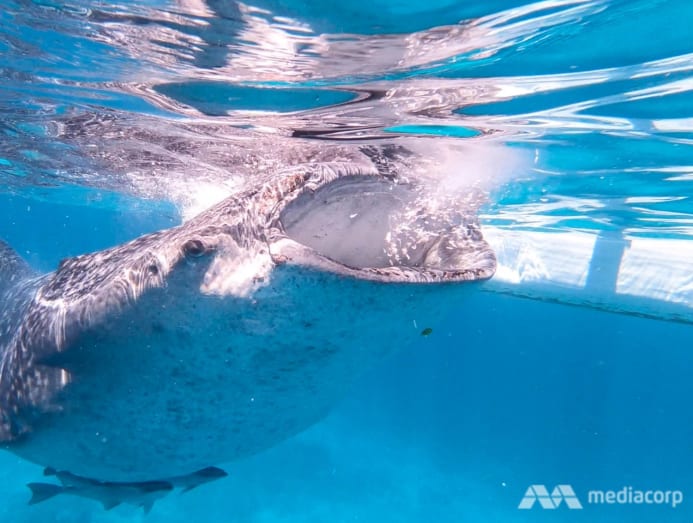
Orbiting their calmness is the chaos of hundreds of snorkellers, scuba divers and boat passengers. A flurry of flippers, selfie sticks, and frenetic splashing trail and surround the majestic creatures.
"Oslob is actually a feeding frenzy," said AA Yaptinchay, the director of Marine Wildlife Watch of the Philippines. "At present it's become part of saucepan lists. People need to do information technology. Everyone wants a whale shark at present."
The spectacle begins every bit the sun rises with the day's first tourist boats assembling, barely 100 metres from the shore.
The visitors out early on the water have won out in the predawn hustle for a number in the kickoff come, first served queue. About half of the daily contingent are foreign tourists - mostly from People's republic of china, Korea and Japan - and they scramble for prime number position in the tightly managed schedule to get their chance to see the sharks up shut.
Thirty boats are allowed in the feeding zone at whatever given time, for but thirty minutes each. Though in principle there are rules designed to protect the welfare of the sharks, such equally a three-metre buffer zone, the reality is akin to an aquarium with no barriers.
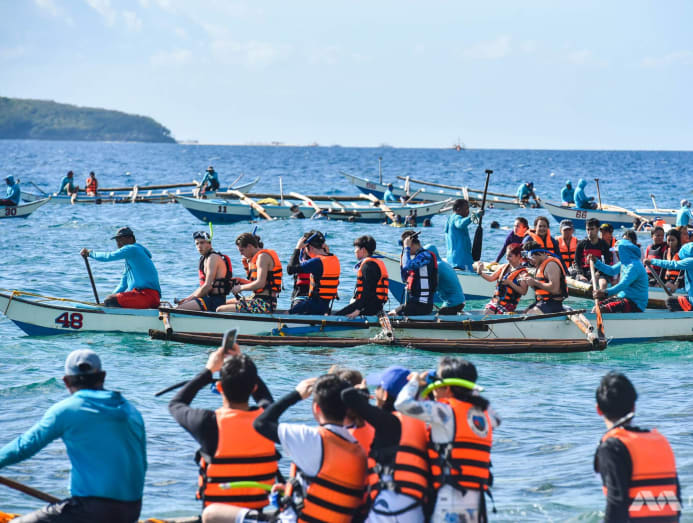
Tourists examination the boundaries of what is allowed, unable or unwilling to resist touching the sharks every bit they laissez passer.
A written report in 2022 showed non-compliance rates with keeping a minimum distance from the sharks was 97 per cent. Information technology is behaviour described as a "guilty pleasance" by environmental researchers.
There is nowhere else on world where this happens.
The Oslob practice has been controversial since its inception in 2012. The industry was born by chance on the supposed request of a Korean diver who wanted to meet the sharks, which are regular visitors to the nutrient-rich waters, closer to shore.
Fishermen had ever considered whale sharks pests, disruptive to their work as they tangled in their nets. Recently, they've been seen equally valuable generators of cash.
For about 15 years, another eco-tourism project allowing visitors to swim with wild whale sharks had been operating with huge success in Donsol, a small fishing hamlet in southern Luzon.
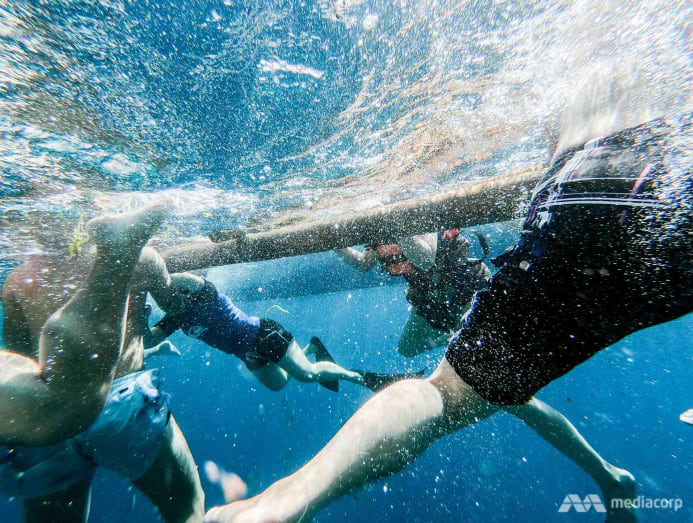
Oslob locals seized their chance to not only replicate that success but have it to whole new levels. They started feeding the whale sharks - a exercise strictly prohibited in Donsol and elsewhere - and watched every bit the business exploded.
Now, hundreds of thousands of people are drawn to the small fishing town every twelvemonth. Whale shark interaction is a 364-day-a-year activity - they just rest on Expert Friday. In 2012, the attraction was visited by nearly 63,000 tourists. In 2018, that number soared to more than half a one thousand thousand.
On busy days, more 2,000 people are ferried out to collaborate with the animals. Fifty-fifty off-peak, the number can reach a k. The notion of seasonal whale shark appearances - they are migratory creatures - is over hither.
"We love whale sharks and so much, we're loving them to death," Yaptinchay said.
While the Donsol projection began with shark conservation as its core office, Oslob is purely and unashamedly economic. And this multi-one thousand thousand dollar industry has securely divided the country.

'A LEARNING EXPERIENCE'
"Before, Oslob was a sleepy town. Information technology was a quiet town," said municipal tourism officer Elizabeth Benologa. At the appearance of the whale shark enterprise, neither she nor the town's locals expected it to grow in popularity - or notoriety - like it has.
"We were only imagining having 100 or 200 visitors each day. Peradventure 500."
It was a gross underestimation of the wonder people from around the world would notice in these unique encounters. The community impact was sudden but mostly positive.
The transformation that subsequently came over Oslob has been dramatic. Hundreds of people have straight found new livelihoods, particularly outside of traditional fishing practices.
The daily incomes for those inside the union-like group that runs the whale shark operation are secretive, but understandably believed to be staggeringly high. Each foreign visitor pays around United states$19 for the experience, with locals paying half that corporeality.
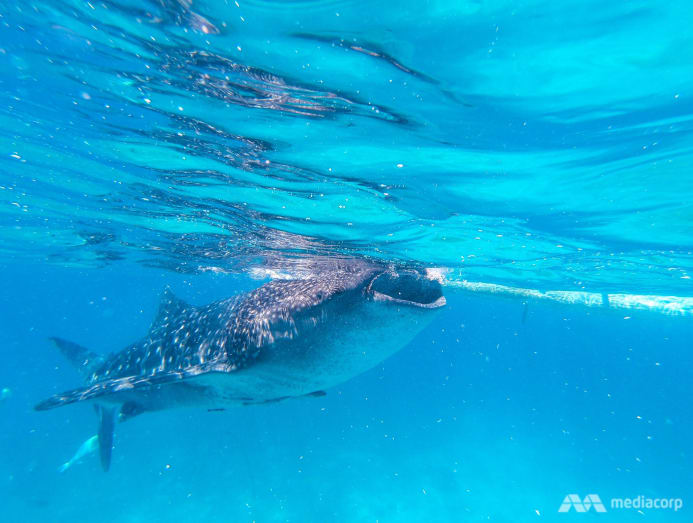
"Afterward several years the fishermen can now send their children to school and can have beautiful houses and cars. The lifestyle has improved," Benologa said.
Much-needed infrastructure has slowly been catching upward to demand, including guesthouses, restaurants and alternative tourism sites. Shopping malls and a 5-star resort are the side by side large-ticket items earmarked for the expanse.
It is on this ground that stakeholders in the business contend for its uninterrupted continuation.
Amidst those is one of the central national government groups tasked with oversight of environmental impacts of marine activities like this one, the Bureau of Fisheries and Aquatic Resources (BFAR).
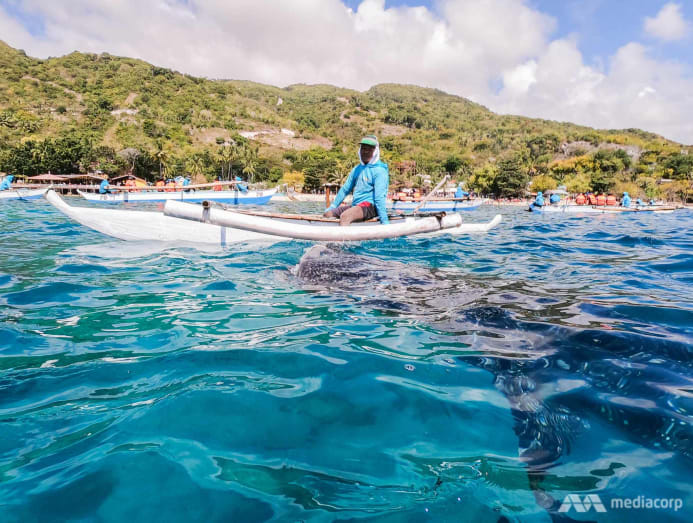
Johann Tejada, a BFAR line-fishing regulation officeholder and marine biologist is an unabashed cheerleader for the whale shark interactions.
"No whale sharks have ever been killed during the unabridged operation. No tourists were harmed," he said. "So why would yous say it'due south a bad thing?"
All the same, in that location is a long queue of environmental groups and researchers producing show that greater care needs to be taken to preclude unknown long-term impacts on what is an endangered and protected species.
Understanding of whale sharks, their behaviour, convenance and resilience is still far from complete. But already there are warning symptoms.
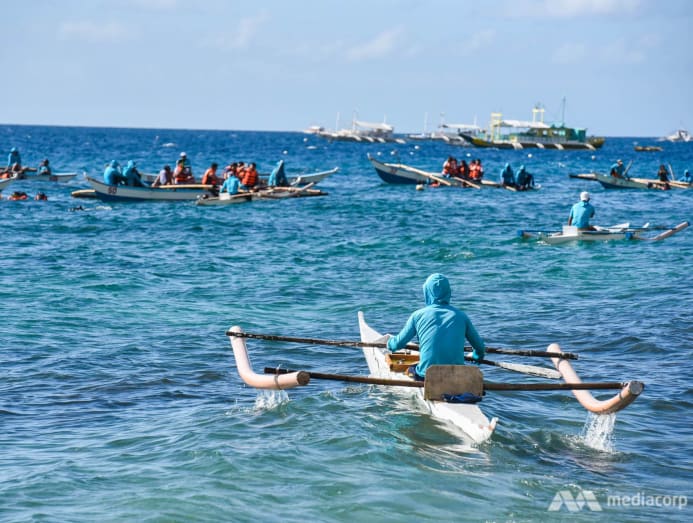
The Large Marine Invertebrates Research Institute Philippines (LAMAVE) is i the leading groups studying the what is happening in Oslob. Their field studies have raised ethical and environmental questions effectually the feeding of the sharks.
Research showed the potential for the annual movements of whale sharks to be modified, their hunting habits to be contradistinct and their reliance on humans to increase. Already, sharks in the Oslob area associate boats with food and have adopted a vertical feeding position direct below them to more easily attain the shrimp being thrown by human being feeders.
It is unusual and worrying, according to AA Yaptinchay. "They're not meant to exist in that shallow depth. It affects body temperature regulation, causing stress to the brute making them more susceptible to disease and reproduction could be afflicted," he said.
Some of the sharks are also showing "anticipatory behaviour", arriving within v minutes of the feeding boats every single morning, without neglect.
These are concerns that Tejada says are overhyped and unconfirmed. "Until now it has never been proven," he said.
"I'm not saying it's perfect. Because it's the first fourth dimension, information technology'due south a learning experience. At that place's nowhere else to compare."
He says the local community "should take advantage of the opportunity" to change their lives at present, knowing that whale sharks could be "gone in the blink of an eye".
"It'southward meant to be adaptive management. If information technology's not working, then let's try to look for another solution."
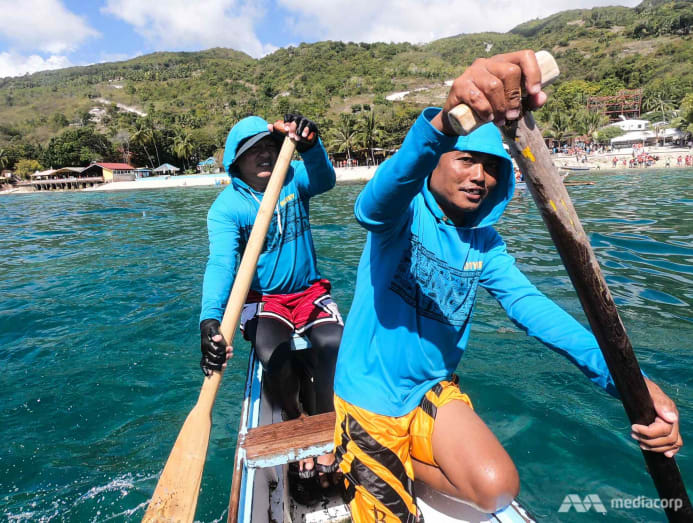
'WHAT HAPPENED TO THE DINOSAURS?'
Operators certainly do not have carte blanche in Oslob. Over the past year, Philippine authorities have had unsustainable tourism operations in their crosshairs.
The highest profile example saw the six-month closure of the holiday resort island of Boracay, labelled a "cesspool" by President Rodrigo Duterte and held to more strictly enforced ecology standards.
Tourism officer Elizabeth Benologa says Oslob is "absolutely" concerned virtually a time to come shutdown affecting their customs. In response, a multi-stakeholder task strength is in identify to monitor the whale shark state of affairs and recommend any needed changes.
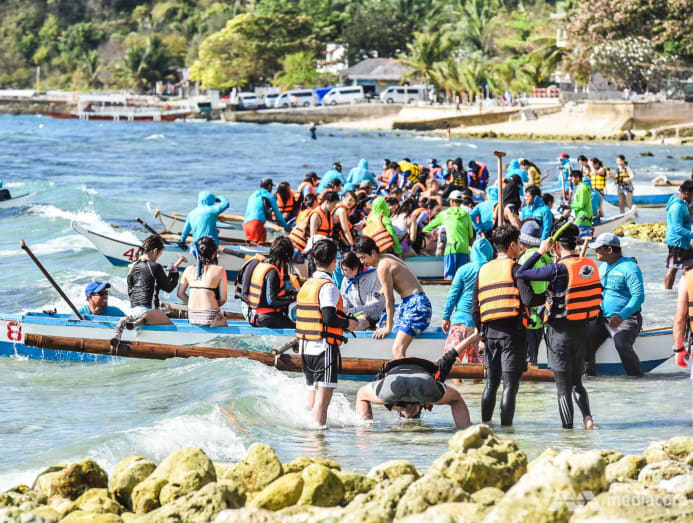
But she is already convinced that by "showing love" to the whale sharks they are actually existence helped and possibly saved from threats like climatic change.
"As long as they are here, we make them experience like they are really loved," she said.
"What happened to the dinosaurs? Why did they not survive? It'southward because nobody cared for them. Nobody had a relationship with them. We are always merely agape of the animals. Why don't we let the animals love us and we will love them besides?
"Dinosaurs didn't know where to go or who would exist their knight in shining armour during climate change so they died. But here we can help these animals. If they cannot suit, they will die," she suggested.
"I want the environmentalists to open up their minds, open their hearts, not just for the animals merely the people effectually them. "

Meantime, legislation is beingness pushed through at a national level that could fundamentally alter the future of shark protection in the Philippines. The Philippine Shark Conservation Nib, which could be passed in 2019, would back up more shark conservation programs on a national scale.
Crucially, new laws would outlaw the feeding of sharks, although Yaptinchay concedes that Oslob is likely to exist exempt from the restriction. He says he can alive with that, as it would still hateful no new sites could outset operating.
"I don't think all the stakeholders know what is striking them. Information technology's a good year for sharks."
In many ways, the plight of whale sharks in the country is both a conservation success story and a cautionary tale. Awareness and pride is high in the Philippines - the whale shark even features prominently on the 100 peso banknote.
The country stands tall and strong on marine conservation issues compared to its neighbours, particularly around species like whale sharks. Information technology is the sole Southeast Asian party to the Convention on Migratory Species, and has proposed better marine protection networks effectually the region, where cases of whale sharks beingness hunted remain.
Yet, operations in Oslob remain a blip on its ambitions.

For their part, the local fishermen say they exercise care about the whale sharks and their sustainable hereafter. They have promised to keep improving their practices; indeed, they need to.
"This is a huge approval. It is because of them that we have food on our tables, so information technology is merely fair that we take good care of them and conserve them so they alive longer," said Oslob Sea Warden Mark Rendon.
It is an acknowledgment of a duty of care that appears to be ignored by many of the tourists in overloaded boats who pursue the whale sharks in their snorkelling equipment.
On their interaction tours, there is no ecology or learning information about whale sharks provided, and the rules and prophylactic briefing is conducted in English - a problem for scores of the visitors.
Regardless of best intentions, organised chaos ensues as a outcome.
"I wouldn't characterization Oslob sustainable. It's like a theme park ride," Yaptinchay said.
"I wish people would care more than about the creature, rather than their selfie."
This is the kickoff in a two-office series looking at the plight of whale sharks in the Philippines. The second office tin can be read here.


0 Response to "Whale shark selfies in the Philippines’ seaside ‘theme park’: A tourist experience that's out of control?"
Enregistrer un commentaire